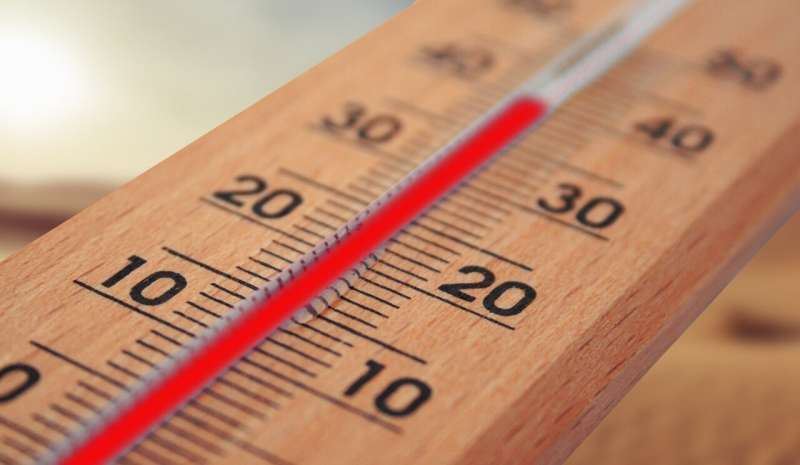Heat extremes in southern Africa might continue even if net-zero emissions are achieved

Human emissions of greenhouse gases have caused rapid . This has made high-impact, heat extreme events around the globe more and more intense over the past 70 years. Heat extremes, such as heat waves, to infrastructure by damaging and . They also harm ecosystems, and can lead to loss of life.
reached new highs recently. Recent studies suggest that the world will miss the globally agreed of keeping the global temperature increase to below 1.5 °C more than it was in pre-industrial times. If the global temperature increase exceeds 1.5 °C, increased risks to health, food and water security, and economic growth.
To prevent this, carbon dioxide emissions must be reduced to an amount that is small enough for natural and to absorb, so that zero human-caused carbon dioxide emissions are left in the atmosphere. This is known as and it needs to happen by 2050. Many countries have pledges targeting net zero.
But will reaching net zero have any effect on heat extremes, particularly in Africa? We are scientists who investigate what climate change will look like if net zero is achieved. We used climate model experiments to simulate a global transition to net zero. that the intensity of heat extremes after achieving net zero will lessen in most parts of the world, but this differs from region to region.
The outlook for southern Africa is uncertain. Since the 1950s, the temperature in southern Africa has risen. It's also an area that is very sensitive to extreme and damaging events caused by global warming, such as the "Day Zero" drought in Cape Town.
Understanding how temperature extremes will change after net zero is critical to help inform future planning and policy-making. Even if greenhouse gas emissions are reduced, different parts of the world could still be affected by climate change.
Knowing what could happen will enable national governments and international organizations (such as the United Nations) to prepare for a range of possible outcomes.
Heat extremes after net zero
Greenhouse gas emissions that are not naturally absorbed by the land and ocean stay in the atmosphere. This creates the , which makes the Earth hotter the more greenhouse gases are emitted.
Land-based annual average temperatures rise faster than temperatures over the oceans, and in different regions around the world.
This creates regional "hotspots" for temperature extremes—southern Africa, the Amazon and Mediterranean regions are among these. Climate scientists have tried for decades to understand changes in regional heat extremes over climate hotspots. However, most research into sets out what will happen if greenhouse gas emissions continue.
In , we used climate models to explore how heat extremes will change if we reach net zero emissions.
We studied the differences between heat extremes 100 years after net zero and heat extremes when net zero is reached. This is a similar comparison to comparing what happens now, in a rapidly warming climate, with what happened in pre-industrial times.
that after net zero, heat extremes would decrease over most land regions. However, there would be stark differences in different parts of the world.
We wanted to find out what would cause these stark differences in changing temperature extremes after net zero. We took a closer look at southern Africa, a region with highly uncertain changes under net zero emissions and significant impacts from extreme heat events.
An uncertain outcome for southern Africa
Some models we used suggest that the "hotspot" tendency over southern Africa under global warming will generally reverse in response to net zero. However, other models we used forecast very little change in heat extreme intensity over southern Africa in response to net zero.
Some models show that rainfall will increase, especially over the southernmost region of southern Africa after net zero, while others show that the region will become drier. This will also affect the local climate overall. For example, when the soil is moister from rain, it has a cooling effect on land-based temperatures. When water from rainfall evaporates, this also cools down the earth.
The models themselves are produced by different international modeling agencies (for example, the in the United Kingdom, or the in Australia). Each modeling agency makes their own choices on how certain physics are represented in their own models. This means that projections of future climate can be very different from one model to another—as seen in our study.
For now, we know that changes in regional precipitation and land surface conditions might play a major role in changes in temperature extremes in a net zero future.
What needs to happen next
From a scientific perspective, producing more data about how the climate will respond to net zero is useful. are useful in investigating how dangerous weather patterns might develop. They can determine whether the world is heading towards tipping points where climate change will have caused damage to Earth that cannot be undone.
From a policymaking and planning perspective, the current uncertainty in how models forecast local response to net zero should not discourage commitments to net zero. Policymakers and planners should use the research about different kinds of climate changes after net zero to prepare for a range of possible outcomes.
Provided by The Conversation
This article is republished from under a Creative Commons license. Read the .![]()




















